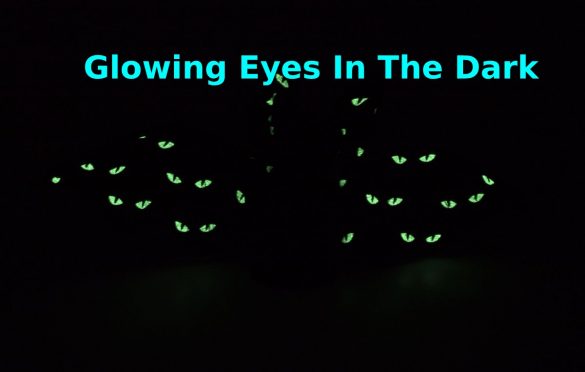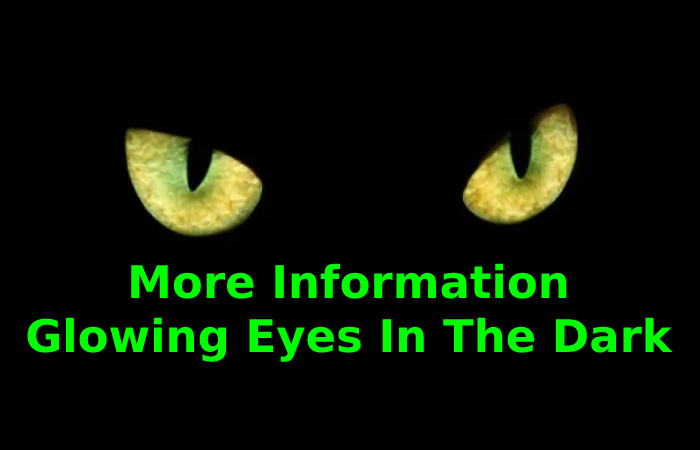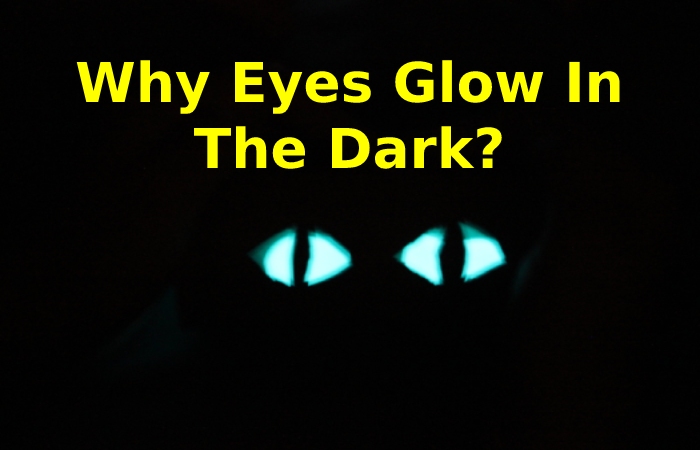Glowing Eyes In The Dark – Brief Summary Report

The Science Behind Glowing Eyes In The Dark
Glowing Eyes In The Dark – When we see animals’ eyes in photos, nature movies, flashlights, and headlights beams, we see them shine towards us, but human eyes only glow bright red in photos. What are the causes of shine? What causes the color?
The light of red human eyes is a lot like the moon’s glow. It is light reflected from a much larger light source. A camera flash passes through the pupil and reaches the back of the eye – the retina. The retina reflects the light to the camera, but it does so slightly different from what is entered. Like most of the internal parts of our body, the retina is a dirty red mess, with blood vessels running through it. These blood vessels stain the light, which turns red again. So we dyed light red with our blood.
More Information Glowing Eyes In The Dark

But what about the eyes of animals? Dogs, cats, and deer take blood, and their eyes do not resemble a vampire’s. Instead, their eyes shine from a layer called the tapetum lucidum just behind the retina. This layer reflects light because that is precisely what it should do. Cats, dogs, deer, and other nocturnal animals have good night vision because whatever the photoreceptor cells in the retina don’t pick up, it hits the tapetum lucidum and goes back through the retina a second time. As a result, they get more photons from the same act.
Since the tapetum lucidum is much more reflective than the retina, the redness disappears with the materials that make up the reflective layer. Although the pigment in the retina and pupil can influence the color of the glow, most of it comes from slight differences in the levels of elements such as zinc in the reflective layer.
The lack of this layer makes humans only glow in photos and not in flashlight beams. The relatively weak retina can only burn during a powerful and short flash from a camera. The moment delivers a lot of light and is a light that is usually directed at a person’s face. Unfortunately, the camera also emits this light only for a brief second. Some cameras eliminate red-eye with two flashes. Sparks are used when dark and darkness dilates the pupil, allowing the retina to absorb as much light as possible. When the first flash is fired, the pupil contracts and doesn’t let in enough light for the retina to make someone look like a ghoul.
Why Eyes Glow In The Dark? Glowing Eyes In The Dark

Eyes that glow in the pitch-black dark make for many a terrifying tale. But why do certain animals’ eyes light at night?
“A lot of the animals we see, especially those that come out at night, have a special reflective surface right behind their retinas,” says Dr. Cynthia Powell, a veterinary ophthalmologist at Colorado State University. This light-reflecting surface, called the tapetum lucidum, helps animals see better in the dark.
When light enters the eye, it believes to hit a photoreceptor that transmits information to the brain, says Powell. But sometimes the light does not reach the photoreceptor, so the tapetum lucidum acts like a mirror, causing it to bounce a second time.
A large number of animals have tapetum lucidum, including deer, dogs, cats, cattle, horses, and ferrets. Humans don’t, and neither do other primates. Squirrels, kangaroos, and pigs also don’t have a button placket.
And not all animal eyes glow the same color. Powell says this is due to unlike substances found in an animal’s carpet, such as riboflavin or zinc. “Plus,” she says, “there are different amounts of pigment in the retina, and it can affect the color.” Age and other factors can also change color, so even two dogs of the same species can have different colored eyes.


